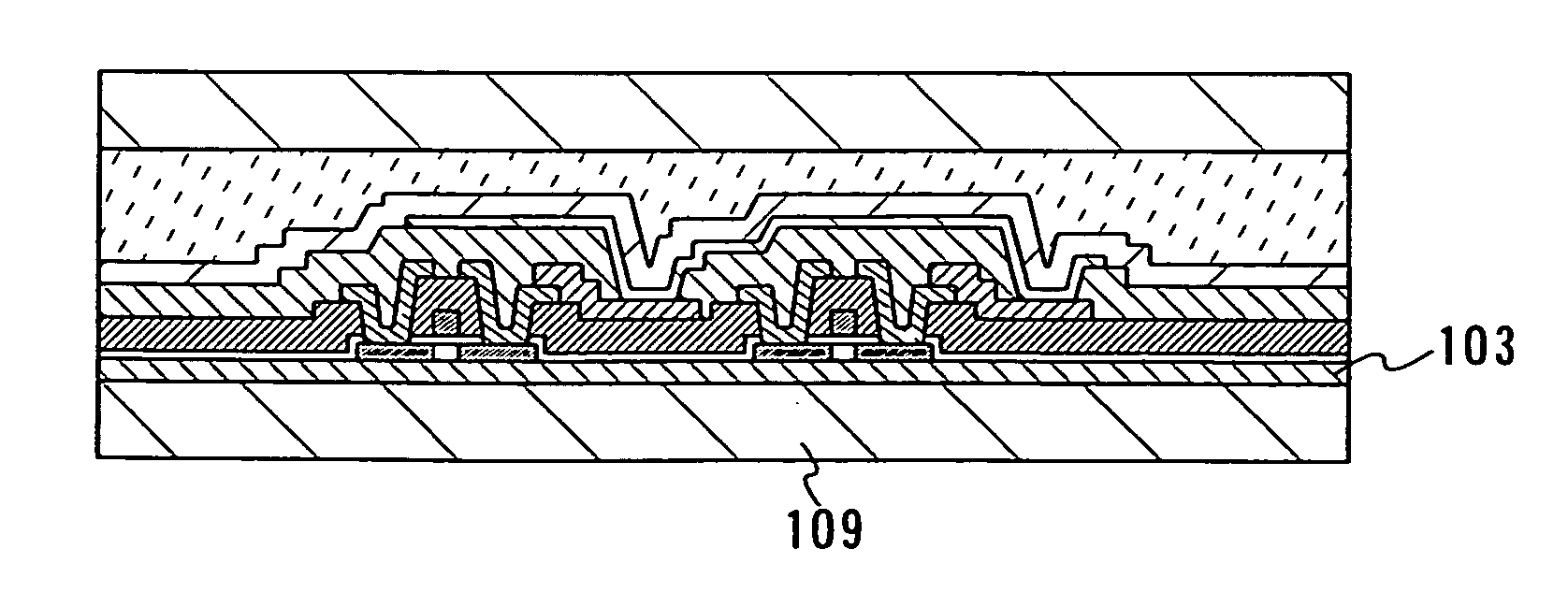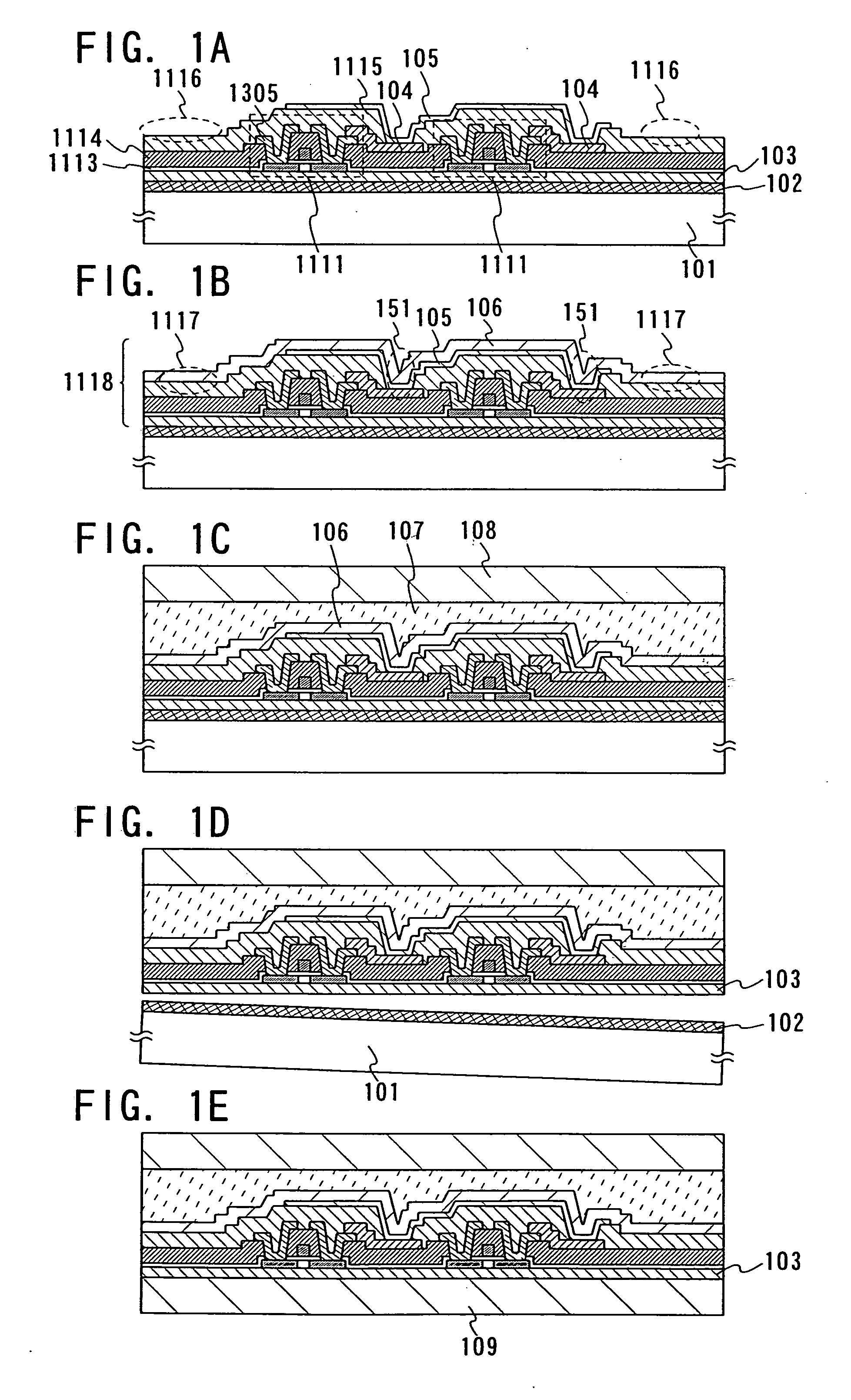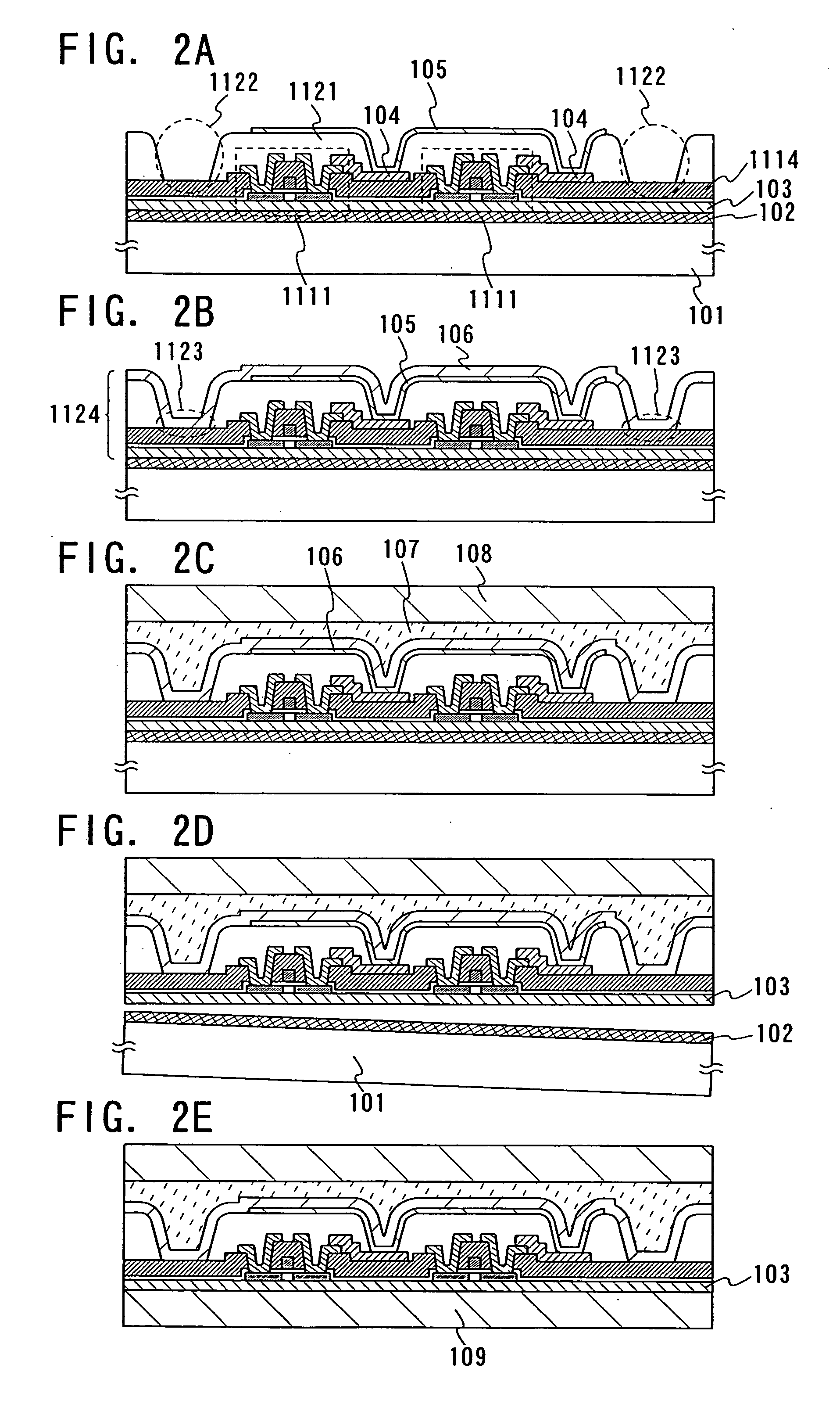Semiconductor device and manufacturing method thereof
a technology of semiconductors and semiconductors, applied in the direction of thermoelectric devices, electroluminescent light sources, electric lighting sources, etc., can solve the problems of difficult manufacturing and inability to form tfts using plastic films, and achieve the effects of low adhesion, high adhesion and high yield
- Summary
- Abstract
- Description
- Claims
- Application Information
AI Technical Summary
Benefits of technology
Problems solved by technology
Method used
Image
Examples
embodiment modes
[0058] Embodiment modes and embodiments of the present invention will hereinafter be described with reference to drawings. However, the present invention is not restricted to the following description, and it is easily understood by those skilled in the art that the mode and detail can be variously changed without departing from the scope and spirit of the present invention. Therefore, the present invention is not restricted to the description of the embodiment modes and embodiments hereinafter shown. It is to be noted that, in the structure of the present invention hereinafter described, the reference numeral indicating the same part is used in common throughout the drawings.
embodiment mode 1
[0059] With reference to FIGS. 1A to 1E, this embodiment mode will describe a method for separating, with high yield, an element which has a layer containing an organic compound and an element-forming layer having the element.
[0060] As shown in FIG. 1A, a separation layer 102 is formed over a substrate 101, and an insulating layer 103 is formed over the separation layer 102. Next, a semiconductor element is formed over the insulating layer 103. Here, a thin film transistor 1111 is formed as the semiconductor element. Then, a first electrode layer 104 which is to be connected to a wire 1305 of the thin film transistor 1111 is formed, and an inorganic insulating layer 1115 covering an end portion of the first electrode layer 104 is formed. A layer 105 containing an organic compound is formed over the first electrode layer 104 and the inorganic insulating layer 1115 by an evaporation method. In FIG. 1A, a region 1116 is a region where the inorganic insulating layer 1115 is exposed. Th...
embodiment mode 2
[0132] With reference to FIGS. 2A to 2E, this embodiment mode will describe a method for separating an element-forming layer, which is different from that in Embodiment Mode 1. This embodiment mode is different from Embodiment Mode 1 in that an organic insulating layer is formed instead of the inorganic insulating layer which covers an end portion of the first electrode layer.
[0133] As shown in FIG. 2A, the separation layer 102 is formed over the substrate 101, the insulating layer 103 is formed over the separation layer 102, and the thin film transistor 1111 is formed over the insulating layer 103, similarly to Embodiment Mode 1. In this embodiment mode, an interlayer insulating layer for insulating a gate electrode from a wire of the thin film transistor 1111 is formed by using an inorganic insulating layer 1114, similarly to Embodiment Mode 1. Next, the first electrode layer 104 is formed over the inorganic insulating layer 1114.
[0134] Subsequently, an organic insulating layer ...
PUM
| Property | Measurement | Unit |
|---|---|---|
| length | aaaaa | aaaaa |
| temperature | aaaaa | aaaaa |
| work function | aaaaa | aaaaa |
Abstract
Description
Claims
Application Information
 Login to View More
Login to View More - R&D
- Intellectual Property
- Life Sciences
- Materials
- Tech Scout
- Unparalleled Data Quality
- Higher Quality Content
- 60% Fewer Hallucinations
Browse by: Latest US Patents, China's latest patents, Technical Efficacy Thesaurus, Application Domain, Technology Topic, Popular Technical Reports.
© 2025 PatSnap. All rights reserved.Legal|Privacy policy|Modern Slavery Act Transparency Statement|Sitemap|About US| Contact US: help@patsnap.com



